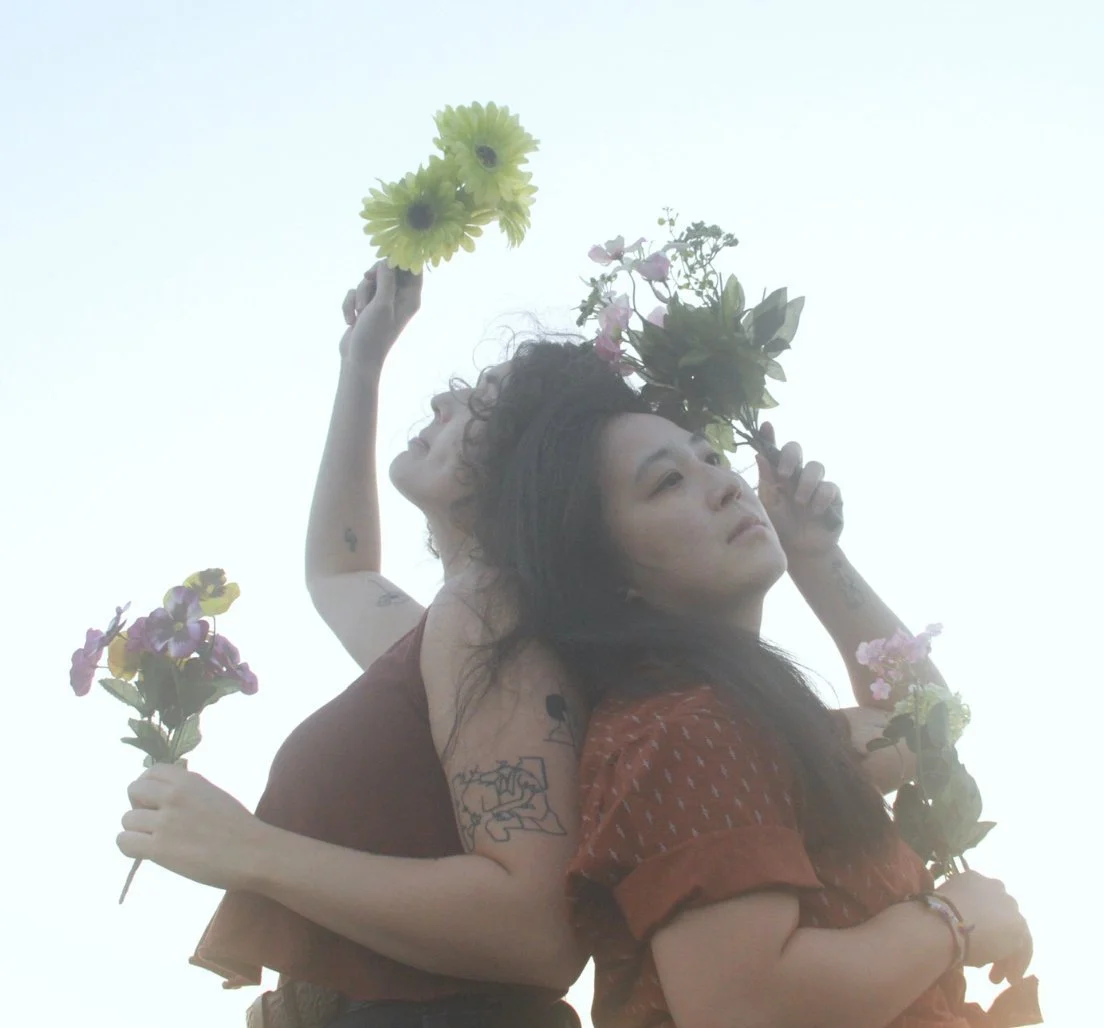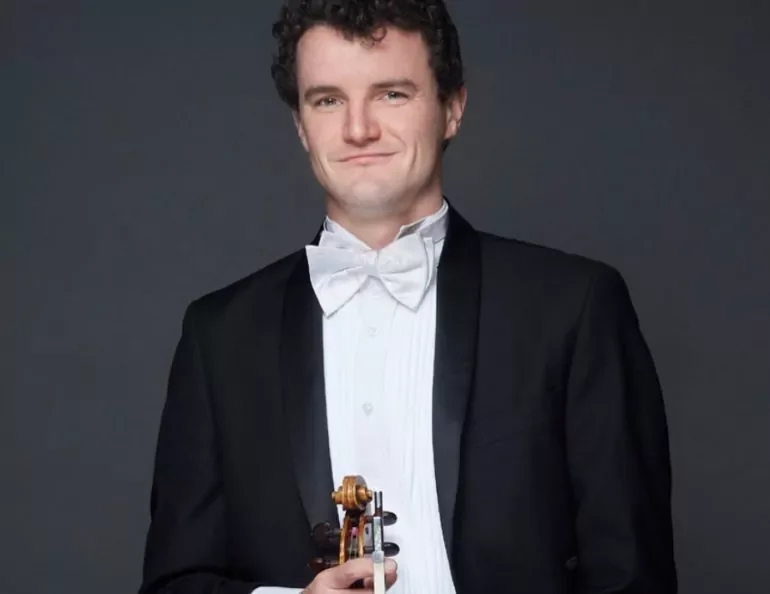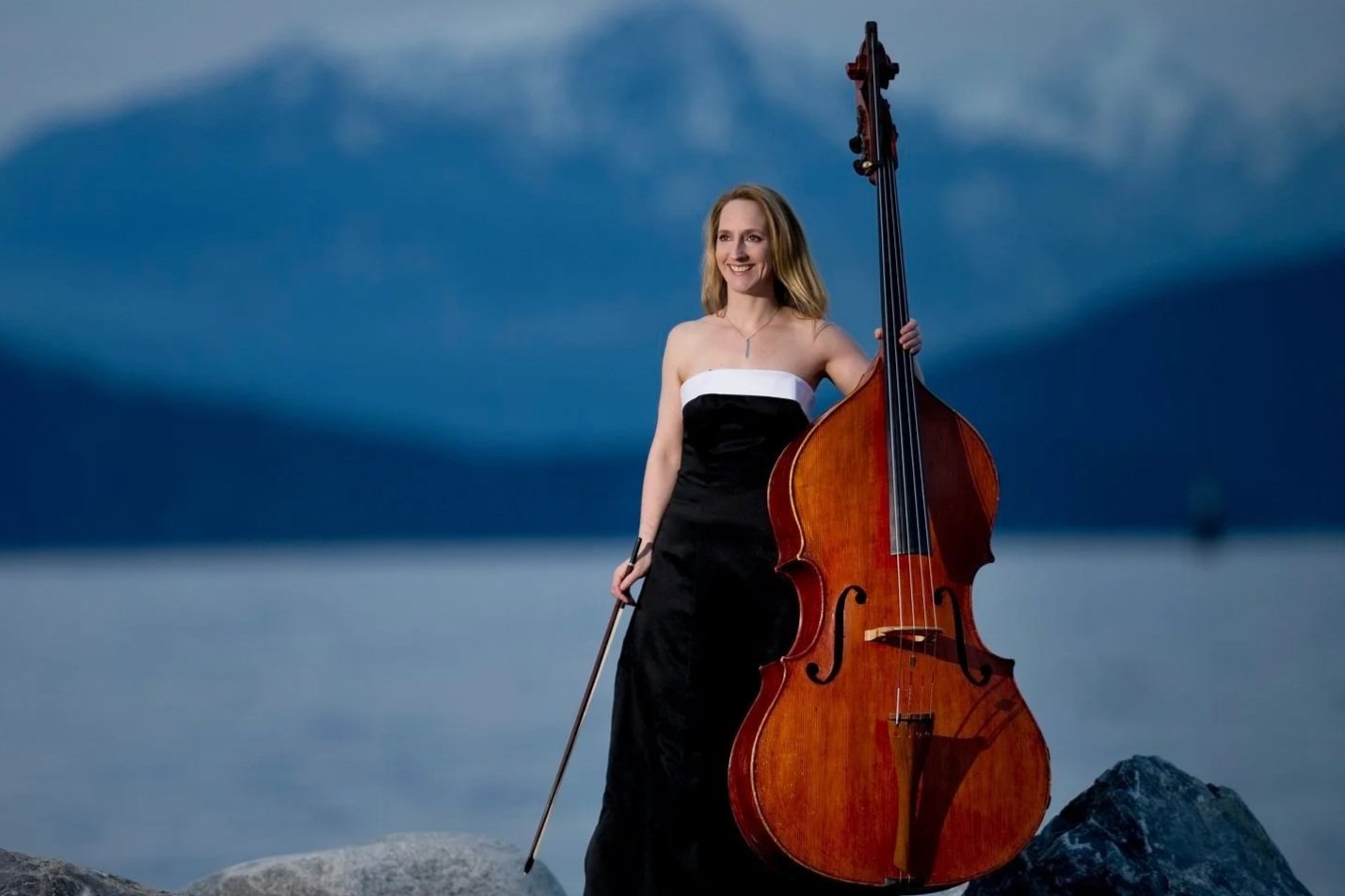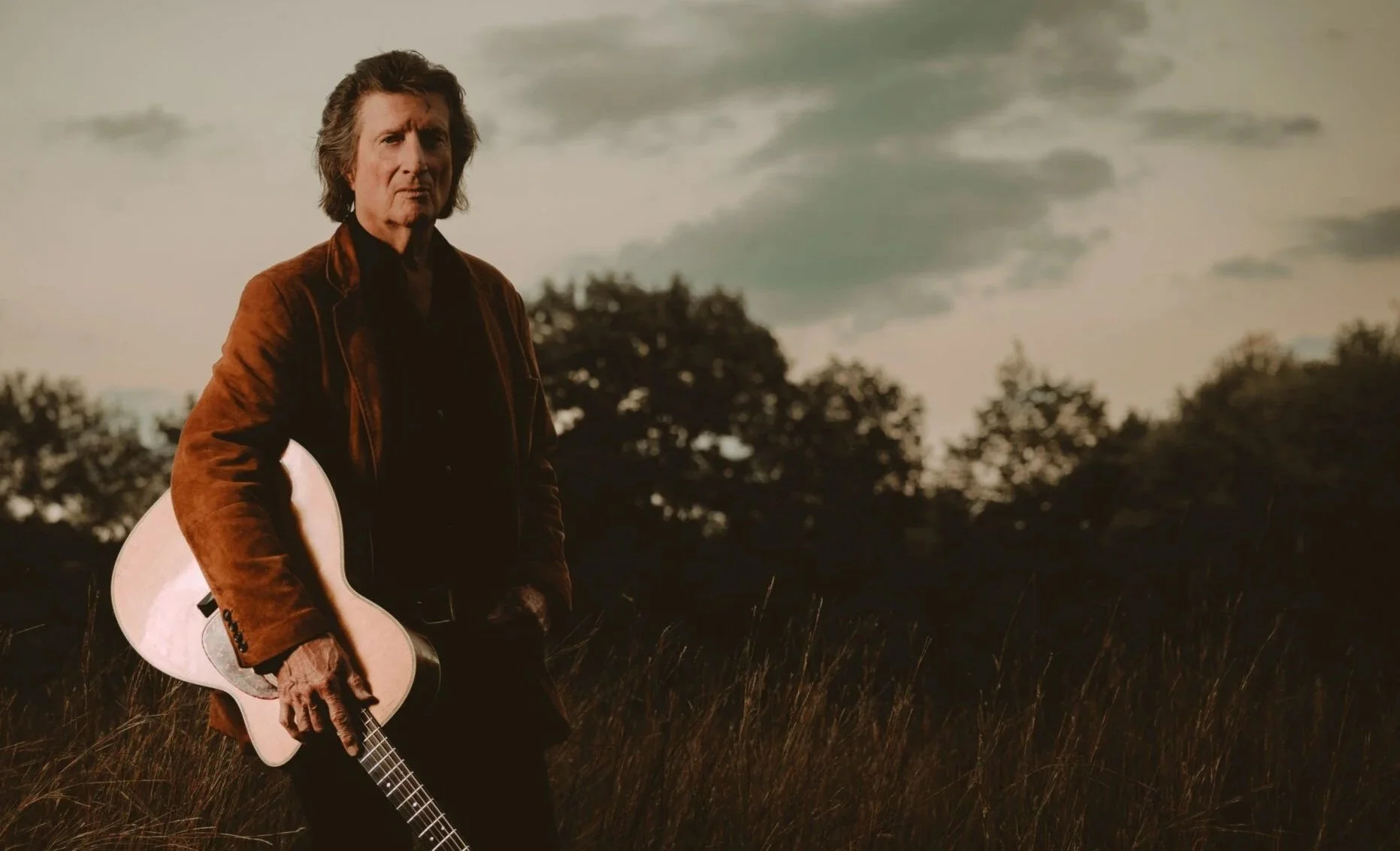Stir Q&A: Sapphire Haze blends natural and unnatural sounds at Music on Main's Digital Salons
Violinist Cindy Kao and electronic artist Aysha Dulong conjure a mesmerizing exploration of humans’ relationship to water in Asphyxiation
Sapphire Haze.
THINK ARTFUL music with insightful conversation: Music on Main is hosting free Digital Salons March 8 to 10, featuring livestreamed events each night at 7:30 pm with performances from the 2021 Modulus Festival and discussions by artistic director David Pay with some of the city’s most groundbreaking artists and composers.
Amid the compelling talent on the program is Sapphire Haze, a duo with Cindy Kao on violin and Aysha Dulong on electronics, Music on Main’s Emerging on Main artists for 2021-22 who appear March 10 at 7:30 pm.
The talk features a digital screening of their mesmerizing Asphyxiation, which explores the “preciousness of water and the power of resistance against what corrupts it”—and aims at reaching senses beyond your hearing. Afterwards, they’ll have a conversation with Music on Main’s Composer in Residence Sabrina Schroeder.
Stir talked to the pair of artists, both SFU School of Contemporary Arts grads, about the hypnotic sounds they create by blending violin and synthesized sounds, the way imagery inspires their music, and the state of the climate. And don’t forget to check them out live on April 9 at Music on Main’s first concert back the Fox Cabaret.
What do you enjoy most about the blending of the natural string sounds and electronics?
Dulong: “Blending natural strings, or any acoustic instruments, with electronics creates a new instrument in a sense. I like how Cindy and I can play off of each other's musical gestures to provide a listening experience which blurs the distinction between the violin and electronics, hybridizing the sound to the point where the listener cannot decipher who is producing which sounds. I enjoy exploring the relationship between the violin and electronics, as the discoveries that can be made are truly perpetual. We can jam out ideas for hours and always end up creating a new instrument to play with from blending strings and electronics.”
Kao: “I enjoy this process a lot, as playing chamber music or being in an ensemble was my favourite thing as a kid. I fell in love with devising during my acting training, so this is the best of both worlds for me. Getting the freedom to create sounds I’ve never heard before and there are no solid rules to it, and really appreciate listening and conversing with Aysha with gestures and sounds.”
You’ve said you want listeners of your music to tap into more than just their listening senses, or stimulate the senses in new ways. How so?
Kao:“Both of us think and experience music visually, we both have sound to colour synesthesia. We often create based on inspirations from colours and textures, as well as physical sensations and our surrounding nature.”
Dulong: “Yeah exactly, so our goal is to stimulate the listeners' other senses through sound. What does a distorted violin taste like? What does a rich oscillating drone feel like? The goal is for the listener to focus on the sounds in ways they may never have thought to do before. If you close your eyes, and focus on each sense as you listen, it creates a deeper physical and mental experience, one that engages the full body.”
How did the contrasting qualities of your instruments lend themselves to the theme here of water and what corrupts it?
Kao: “We write and create often based on what makes us curious, that can be from a dream we had, just improvising and having fun, to talking about the current state of the climate, which is what Asphyxiation is about.”
Dulong: “Within each section of the piece, we want to juxtapose the unnatural to the natural with sound, highlighting that these opposites can work together, and how one corrupts the other if there is no balance. I would say this is true in regard to the contrasting qualities of our instruments. Both of our instruments have gritty and ethereal qualities, and together, these qualities can be juxtaposed in a way that is visual and sonic. Cindy’s natural movements while playing are reflected in the sound quality, whether that is becoming gritty and moving in a jolted manner or playing smooth and with flowing movement. Those movements trigger me to create a momentum in my own sounds which become difficult to tame unless I focus in and find balance. This is reflective of the human relationship to nature and water. Who do we turn to in order to find this balance?”
Listening to Asphyxiation is mesmerizing. Do you find yourselves entering a similar, trancelike state as you play?
Dulong: “Oh yeah I definitely do! Cindy and I take a moment before playing this piece to place ourselves in the world it is based off of, which is unique for both of us. This piece has a sense of stillness for the first half, and I feel like I am barely moving as I perform, just sinking deeper into the sonic world we are creating. The colours I see while playing this piece are also very vivid, so it almost feels like I am transported somewhere else when performing it.”
Kao: “Absolutely, especially in the beginning stages as that is how we create. We play off of each other and sometimes that can last for a while, losing ourselves in sound and the colours we see, sparking new ideas. After nailing down the composition, setting the ideas, rehearsing and getting the logistics down, I often find myself in a headspace as I am preparing to experience the piece again as if it is brand new every time.”
The piece conjures all kinds of imagery when you listen to it. Are you picturing specific things as you create it or play it?
Dulong: “Yes I definitely am! I imagine myself floating just above the ocean, looking up at the sky, but the sky is swirling with greens and purples while the ocean is gray. I am looking up at these lush colours that have an other-worldy quality, and it makes me feel like I am escaping the gritty realities underneath, and I just want to pull that lushness down and spread it through the waters.”
Kao: “Always. Everytime I play this piece, I have specific imagery, locations and who I interact with in mind. The sensation of being underwater alone in the beginning of the piece, to conversing with a strange friendly creature. Later on in the piece, feeling the physical struggle of fighting with the industrial metallic sounds, I often realize I create in my actors mind. Seeing a full scene laid out in front of my eyes as I tell the story through sound.”













Beloved Mozart work features fantastical characters and a killer Queen of the Night aria